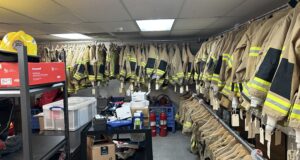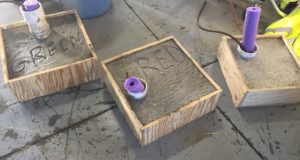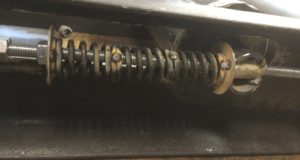Da White Ghost
By Dave Walsh, Chair, DCC Fire Science program
With winter upon us, it’s a good time to review one of the hazards this season brings; the “white ghost.” As we all know, basically only vapors burn; solids must undergo chemical decomposition (pyrolysis) to produce combustible vapors. Liquids must be heated above their flash point to release flammable vapors. These vapors then mix with air, and when a heat source is provided, presto, you have fire.
An oil burner atomizes oil, mixes it with air and then shoots it into the combustion chamber where it is ignited. The combustion chamber then heats up quickly. If the ignition source stops working for any reason, and oil continues to be atomized and pumped into the now hot combustion chamber, it will be way above its flash point. This will cause the release of the flammable vapors. This will appear as a white vapor (smoke). This white vapor is highly combustible/explosive; think of it as a flammable gas such as LP or natural gas.
Today’s furnaces and boilers have safety features to shut it down if the ignition source stops working. The problem arises when either the safety devices fail to shut down the flow of atomized oil (fairly rare), or when the occupant presses the red reset switch multiple times (this human nature cause is more common). Many folks think that if one press of the reset button is good (and doesn’t restart the furnace/boiler), then pressing it multiple times must be better. As it clearly states by this switch, press it only once. If this does not get it going again and if the occupant presses it again and again, they are causing the atomized oil to be sprayed into the hot combustion chamber. It then quickly converts to flammable gas. This flammable gas can back up into the structure. Any ignition source can cause an explosion and/or flash fire. At the first sign of the white ghost, the incident strategy and tactics must switch to those that would be appropriate at a gas leak. Certainly nobody should be inside this environment or even near the structure.
Firefighters are visual learners — show me and I believe! So here’s an easy to do demo to show this danger:
Logistics: You will need:
1) An empty 1 pound metal coffee can
2) A little diesel fuel or fuel oil
3) A piece of wood or cardboard large enough to cover the top of the coffee can
4) A torch or flare
5) Safety glasses and other appropriate PPE
6) Fire extinguisher
7) An outside/safe place to conduct this demo
Procedure:
1) Put the diesel fuel in the coffee can to a depth of about ½”.
2) Now try to ignite it with your torch/flare. It will not ignite as its flash point is about 110-130*f and it is only at room temperature (often your fuel oil at home will be even colder as often your tank is underground).
3) Place your torch so that the flame is on the bottom/outside of the can causing the diesel fuel to heat. You will quickly see some white smoke (flammable vapors) start to appear. Keep heating it until you have a good amount of white smoke coming up.
4) Ignite that smoke with your torch (it will ignite very easily). Let the fire burn for about a minute so that all of the diesel fuel is heated.
5) Extinguish the fire by placing the cardboard over the top of the can. Hold it there for 5 seconds.
6) Remove the cardboard and a lot of white “smoke” will flow out. Put an ignition source near it and it will explosively ignite!
You can see a short video on this on the 17th line at http://faculty.sunydutchess.edu/walsh/videos/TRAINING%20CLIPS/trainingclips.htm
There is a good article on this topic at http://www.fireengineering.com/articles/print/volume-148/issue-5/departments/training-notebook/the-white-ghost.html
The point of this article is the remind folks that smoke is fuel, and in this case very combustible fuel. Whether it’s white smoke, black smoke, grey smoke, they all contain flammable gasses and can often easily be ignited if they are within their flammable/explosive range. Don’t let the fact that the white smoke is cool fool you. As we hear folks say every day, there is no such thing as the routine incident. Furnace/boiler “malfunctions” can quickly turn deadly.
Until a thorough analysis determines otherwise, emergency personnel must approach every incident as if it’s a deadly incident. Complacency is the source of many firefighter injuries and fatalities.
Pass it on!
 First Due Tackle Pass It On – Firefighter, Rescue & Extrication Training
First Due Tackle Pass It On – Firefighter, Rescue & Extrication Training






